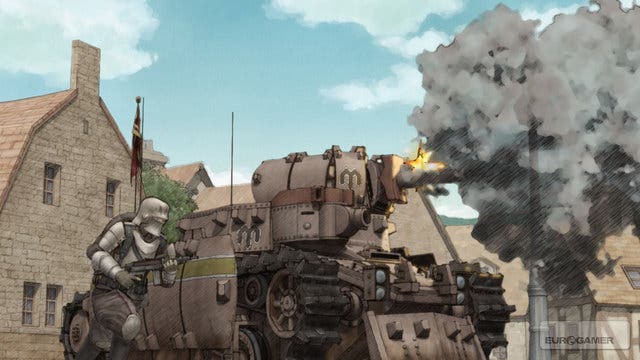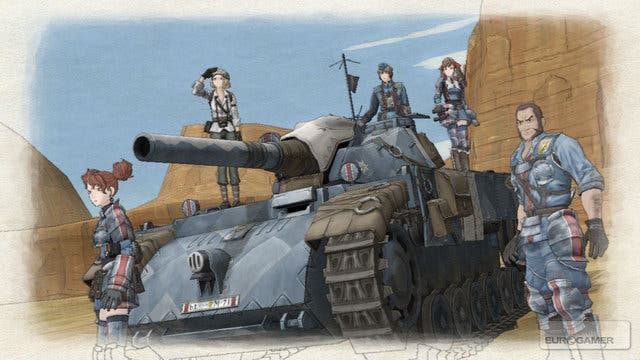Valkyria Chronicles
Turning heads.
The screenshots don't do it justice. It's a common enough refrain, but it's become increasingly popular as new console hardware has offered us ever more lavish visual feasts. As the arts and sciences of animation, lighting, special effects and visual filters come into their own, there's less and less to be gleaned about how a game actually looks from a still image.
So it's understandable that "god, the screenshots don't do this justice" might be your first response when you get to play Valkyria Chronicles, SEGA's upcoming PS3 strategy game. In a sense, maybe it's ironic that so much 3D processing power is required to make 2D look so convincing - but irony be damned, this is a game which looks uncannily like every frame has been lavishly hand-animated.
We've had cel-shaded games for around a decade, of course, but never before have we stepped back from the screen and realised that the graphics wouldn't look out of place in a high-budget animated movie. For fans of Hayao Miyazaki's films (such as Spirited Away and Howl's Moving Castle), the comparisons are fairly obvious, especially with the glorious Old Europe-themed backdrops. For the uninitiated, it's simply a visual feast.
Small details abound, and impress at every turn. Shadows aren't darkened blocks - they're pencil-shaded areas. Hair and cloth animate fluidly and realistically, yet maintain the feeling of being 2D, hand-drawn layers. Comic-book style "sound effects" accompany many actions, yet feel like a proper part of the world you inhabit rather than simply a gimmicky graphical extra. The manga art style won't sit well with everyone, of course, but the artistic accomplishment of the game is undeniable even to those who can't get past the big eyes and spiky hair.

Thankfully, from what we've seen thus far, it's also got plenty of gaming brains behind its pretty face. Valkyria Chronicles is a turn-based strategy game. It's very strongly story-driven, and you do get to run your characters around in real-time (sort of), but the parentage is very clear: Final Fantasy Tactics, Advance Wars and Nippon Ichi's excellent turn-based repertoire.
Set in an alternate history (and geographically muddled about) version of Europe, you play Welkin Gunther, a young man whose dad was a war hero in the First European War. When the forces of the Empire (the USSR, sort of) invade Welkin's neutral country, Gallia, he's drawn into the conflict when he attempts to evacuate his younger sister from their home in a border town. Helpfully, it transpires that Welkin's dad's old tank is still in a shed outside the house, and his sister has learned how to service and drive it. Good old videogames.
After a few missions around the border town, which essentially serve as scene-setting and tutorials, you're recruited by the Militia and pressed into service as the Lieutenant in charge of a unit of soldiers - and that's where the game really kicks off.

Valkyria Chronicles' main hook, visuals aside, is the fact that it completely eschews the grid layout of most turn-based strategy games, instead giving you a realistic, complex chunk of town or countryside in which to fight. Rather than moving units by issuing orders, then, you select which unit you want to move next - and can then run them around in a third-person view until their AP bar has been depleted.
Each unit can also attack once while you're commanding it (either firing their weapon, which brings up crosshairs for you to aim, throwing a grenade, which gives you a ranging arc to position, or using a healing item), and they can interact with the world around them. They can climb ladders to get to higher vantage points, for instance, or crouch behind sandbags to take cover - or even hide in long grass to avoid detection.
In each player turn, you've got a certain number of Command Points to use. Selecting an infantry unit and moving it around uses up a single command point - doing the same with a tank uses two points, so relying too heavily on armour can be a mistake. You don't have to move all of your units every turn, and in some cases, you won't have enough command points to do so anyway. In fact, you can even move the same unit twice, if you want - although their AP will be lower on each subsequent movement in the same turn, as they grow increasingly fatigued.





